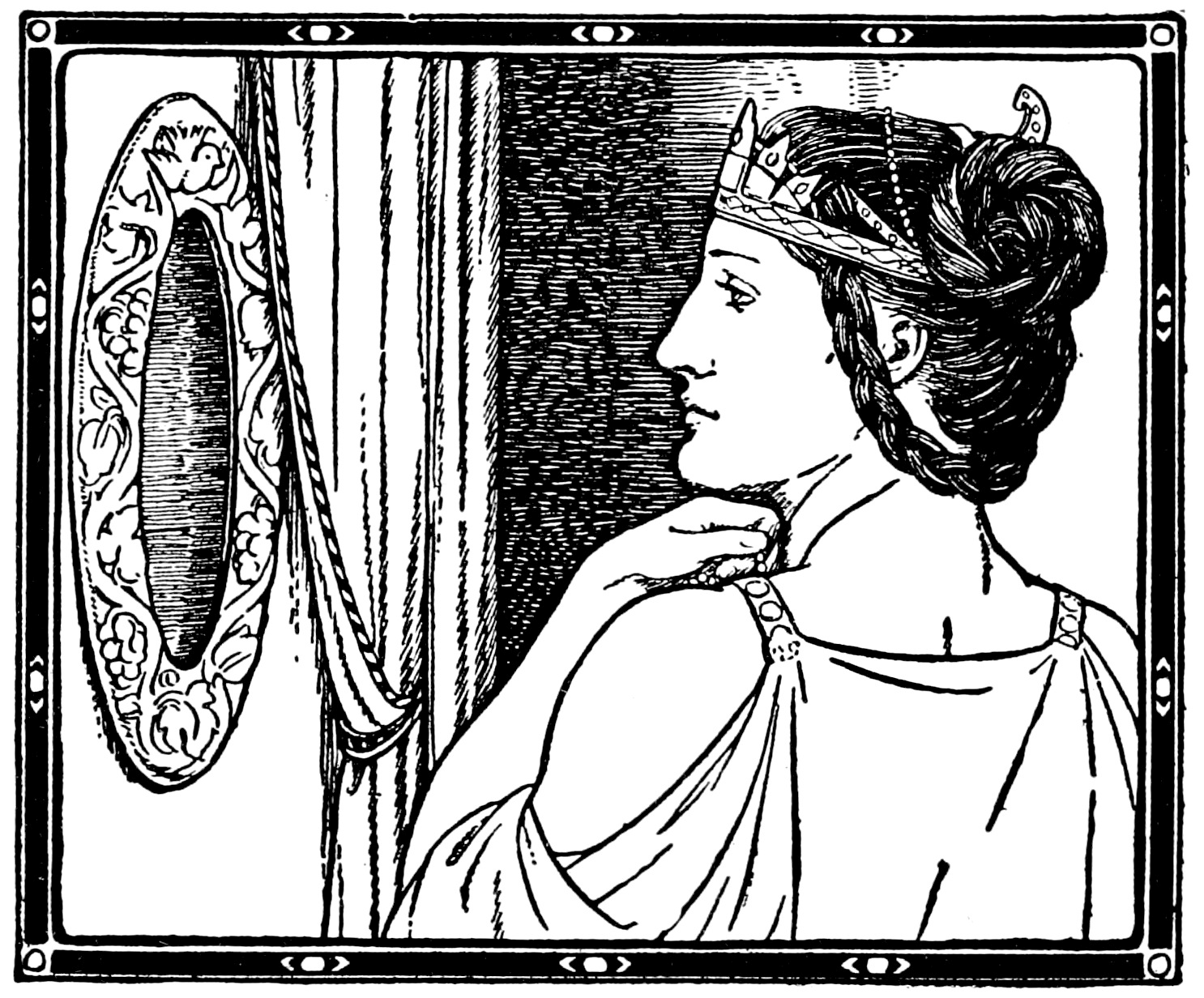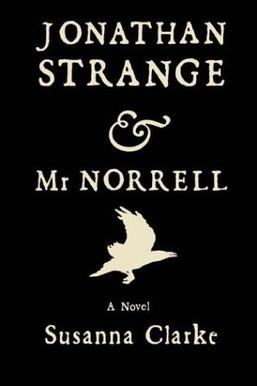1916 (Wikipedia, illustrator not credited)
Early 20th Century Halloween greeting card reveals a popular belief
Mirrors have long been thought to have magical properties. They were seen as being windows to the soul, sometimes betraying the darker nature of the person who looked into it; other times they were thought of as gateways to another world. In the Victorian age, mirrors were thought to be potential portals into the spirit world. The legend of Bloody Mary has survived to this day (at least, I remember being told the story at sleepovers when I was young). Mirrors were also used by magicians in doing spells, and it's still considered unlucky, if you're superstitious, to break a mirror. (Read more about the properties of mirrors here).
Image, and a supposedly real Bloody Mary story, found here
I am intrigued by this idea of mirrors being gateways to the spirit world. It's described in Jonathan Strange*: "There is indeed a path which joins all the mirrors of the world. It was well-known to the Great Mediaevals...The writers I have seen all describe it in different ways. Ormskirk says it is a road across a wide, dark moor, whereas Hickman calls it a vast house with many dark passages and great staircases. Hickman says that within this house there are stone bridges spanning deep chasms and canals of black water flowing between stone walls-to what destination or for what purpose no one knows."
Of course, not every version of Snow White has a magic mirror. In Surlalune's collection of Sleeping Beauty tales from around the world, I counted 14 that used magic mirrors. In seven, the question of who is the fairest was directed to the sun or moon-another object that would, theoretically, be able to speak with authority on all the faces in the world.
Helen Stratton
Some versions don't even have a magical object telling the evil woman who is more beautiful-she will either simply be jealous of someone else's beauty on her own, or her jealousy starts when the man in question pays more attention to the daughter or rival. In other tales, the all-knowing voice is attributed to various things including a magical trout, an evil spirit, an eagle, an Arab kept in a locked room, or sometimes the woman simply asks the other people around her if they think she is most beautiful.
Mirror of Claudia Elisabeth von Reichenstein
Some claim that the tale of Snow White has historical precedents. From wikipedia: "German scholar Karlheinz Bartels suggests that the German folk tale "Snow White" is influenced by Maria Sophia Margaretha Catherina von Erthal, who was born in Lohr am Main in 1725.[1] After the death of Maria Sophia's birth mother in 1741, her father Philipp Christoph remarried. Claudia Elisabeth von Reichenstein, the stepmother, was domineering and greatly favored the children from her first marriage.[2] The Queen's iconic mirror, referred to as “The Talking Mirror,” can still be viewed today at Spessart Museum in the Lohr Castle, where Maria Sophia was born. The mirror was likely a gift from Philipp Christoph to Claudia Elisabeth. It was a product of the Lohr Mirror Manufacture (Kurmainzische Spiegelmanufaktur). The mirror “talked” predominantly in aphorisms. The upper right corner of “The Talking Mirror” contains a clear reference to self-love (Amour Propre). Moreover, mirrors from Lohr were so elaborately worked that they were accorded the reputation of “always speaking the truth”. They became a favorite gift at European crown and aristocratic courts.[3]"
*Jonathan Strange and Mr. Norrel is a historical fiction novel, but author Susanna Clarke draws heavily on research of magical beliefs and history to make an incredibly compelling and believable story. It's literally one of the best books to have been written in our lifetimes and you should all go read it, right now.








No comments:
Post a Comment